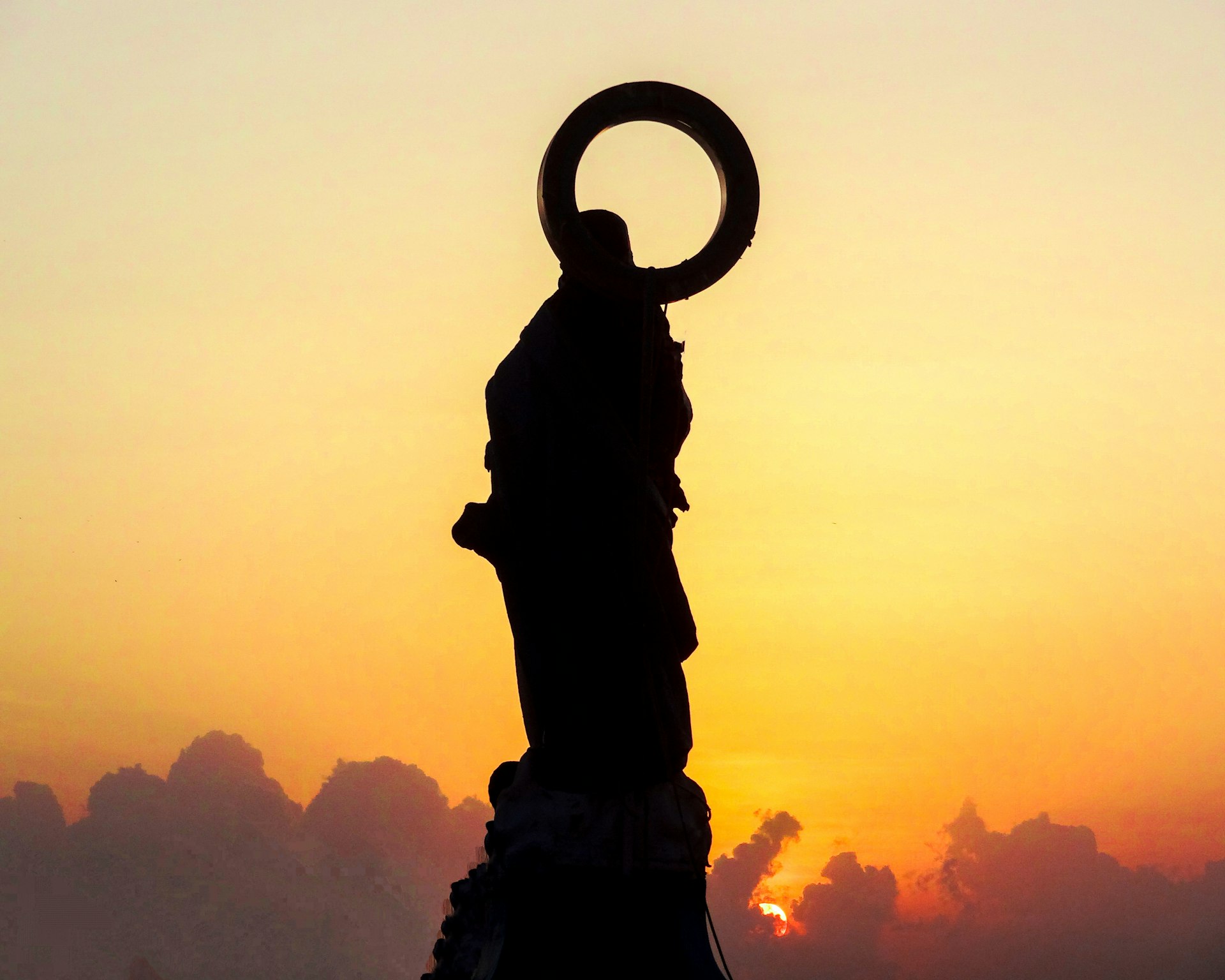Tracing the Global Expansion of World Religions: Historical Patterns and Modern Trends


Photo by Kunal Jain on Unsplash
Introduction: The Evolution of World Religions
World religions have profoundly influenced societies, cultures, and political landscapes across history. Their expansion has been characterized by migration, conquest, missionary work, and cultural adaptation. Understanding how major religions spread and evolved not only provides historical insight but also empowers individuals and organizations to access credible information, participate in interfaith initiatives, and foster cultural competency. This article examines the key phases of religious expansion, notable case studies, current global statistics, and practical steps for further exploration, using only verified and accessible resources.
Prehistoric and Ancient Religious Expansion
Religious practices began in prehistory, with evidence of ritual and spiritual activity dating back to the Middle Paleolithic era (200,000-50,000 BCE). Early religions were highly localized, rooted in animism and ancestor worship. By the Bronze Age, written evidence of religion appeared in Sumerian tablets, marking the transition to organized belief systems [1] . The earliest Egyptian myths, recorded around 4000 BCE, reflected complex polytheistic traditions. These religious systems spread via trade, migration, and conquest, setting the stage for later global religions.
The Axial Age and Formation of Major Religions
The Axial Age (roughly 800-200 BCE) saw the emergence of transformative philosophies and religions. Platonism, Buddhism, Hinduism, Zoroastrianism, Judaism, Confucianism, and Daoism developed in distinct cultural spheres yet shared a trend toward abstract, universal principles [2] . These religions expanded through intellectual exchange and political patronage. For example, Buddhism spread from India to East Asia via missionaries and trade routes, while Judaism influenced emerging monotheistic faiths through diaspora communities.
Expansion in the Common Era: From Christianity to Islam
Christianity and Islam exemplify rapid religious expansion. Christianity began as a small sect in the Roman Empire but gained official recognition in 312 CE under Constantine I. Armenia adopted Christianity as a state religion shortly after, and missionary activity propelled its spread throughout Europe [1] . Islam arose in 7th-century Arabia and expanded quickly through conquest, trade, and cultural integration, shaping societies from Spain to Indonesia. The Crusades (1096-1291) and other religious conflicts further influenced the territorial reach and societal impact of both faiths [2] .
Religious Expansion in Early Modern and Modern Eras
The 16th century marked dramatic shifts: Catholicism spread through Spanish and Portuguese empires, and the Protestant Reformation, launched by Martin Luther in 1517, redefined Christianity in Europe [3] . African religious systems were introduced to the Americas via the trans-Atlantic slave trade. In South Asia, the Mughal Dynasty (1526-1858) blended Islam with local traditions, while Sikhism solidified its identity with the creation of the Khalsa in 1699. These developments were often driven by migration, colonialism, and state policies.
Contemporary Trends: Statistical Growth and Demographic Shifts
Modern data reveal significant changes in religious demographics. From 1800 to 2000, the world’s population increased sixfold, but Christianity grew ninefold, rising from 22.7% to 32.4% of the global population. Projections suggest Christians will comprise 33.8% by 2025 [4] . Islam has shown the highest growth rate in recent decades, particularly in Africa and Asia. Between 2010 and 2019, Islam grew by 21.7%, Christianity by 13.33%, and Hinduism by 17.6% [5] . This expansion is influenced by birth rates, conversion, migration, and social dynamics.
Case Studies: Mechanisms of Expansion
Religious expansion often follows specific mechanisms:
- Missionary Efforts: Christian and Buddhist missionaries traveled widely, establishing religious institutions and converting local populations. For example, Jesuit missions in Asia and Africa played pivotal roles in spreading Christianity.
- Migration and Diaspora: Jewish, Muslim, and Hindu communities established diaspora networks that maintained and adapted traditions. Migration created new centers of religious life, as seen in the spread of Islam via trade routes in Indonesia and East Africa.
- Political Endorsement: State policies, such as Constantine’s tolerance of Christianity or Akbar’s religious pluralism in the Mughal Empire, accelerated the adoption and institutionalization of religions.
Challenges included resistance from local communities, syncretism, and conflicts between rival religious groups. Solutions often involved adaptation of rituals, translation of sacred texts, and negotiation with political authorities.
Practical Guidance: How to Access Reliable Information and Resources
Accessing accurate information about the history and expansion of world religions requires a strategic approach:
- Start by consulting reputable encyclopedias and academic websites. Wikipedia’s Timeline of Religion offers a comprehensive chronological overview and references for further study [3] .
- Utilize educational platforms such as World History Encyclopedia for detailed timelines and thematic articles [1] .
- Verify statistical data through established sources like Christianity in View , which provides historical and forecasted population figures for major religions [4] .
- For multimedia perspectives, review documentaries and visualizations from official outlets such as TRT World , which presents data-driven insights into modern religious trends [5] .
- If seeking primary sources or state policies, consider searching academic databases (e.g., JSTOR, Google Scholar) and official government or religious organization websites. Always cross-reference information for accuracy.
If you are unable to access a specific resource, you may contact your local library, university department of religious studies, or use academic search engines to locate peer-reviewed research. Many organizations and interfaith networks provide public lectures, online courses, and community events that deepen understanding of religious history.
Alternative Pathways for Exploration
For those interested in practical application or community engagement:
- Attend interfaith dialogues and cultural exchange programs organized by universities, NGOs, or religious institutions.
- Participate in online forums and webinars hosted by reputable academic centers or religious study groups.
- Explore museum exhibits, historical archives, and public lectures for immersive learning experiences.
To find these opportunities, search using terms like “interfaith dialogue events,” “religious history seminars,” or “museum exhibits on world religions.” Contact local universities or cultural centers for schedules and registration details.
Key Takeaways
The expansion of world religions is a dynamic process shaped by historical events, cultural adaptation, and social change. Verified resources and strategic search methods enable individuals to access reliable information and participate in meaningful exploration. Whether pursuing academic research, personal enrichment, or community involvement, the pathways outlined above provide actionable steps for understanding and engaging with the global history of religions.

Photo by Hi_Mac on Unsplash
References
- [1] World History Encyclopedia (n.d.). Timeline: Religion. Comprehensive chronology of religious development.
- [2] Study.com (n.d.). History of Religion: Overview, Origin & Timeline. Educational overview of religious origins and expansion.
- [3] Wikipedia (n.d.). Timeline of Religion. Chronological listing of major events in religious history.
- [4] Christianity in View (n.d.). Statistics and Forecasts for World Religions: 1800-2025. Verified population statistics and growth rates.
- [5] TRT World (2020). Visualised: World’s Major Religions from 1945-2019. Documentary and statistical analysis.






